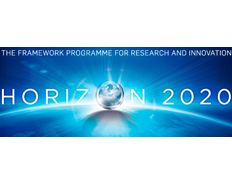Print

Flows of hot plasma connecting the Milky Way centre to the corona, halo and beyond - Hot Milk
Details
Locations:Germany, Italy
Start Date:Mar 1, 2020
End Date:Feb 28, 2025
Contract value: EUR 1,989,375
Sectors: Research & Innovation
Description
Programme(s): H2020-EU.1.1. - EXCELLENT SCIENCE - European Research Council (ERC)
Topic(s): ERC-2019-COG - ERC Consolidator Grant
Call for proposal: ERC-2019-COG
Funding Scheme: ERC-COG - Consolidator Grant
Grant agreement ID: 865637
Project description:
Sensitive X-ray study to reveal hot plasma pouring out from Milky Way centre
In the 1990s, the Roentgen Satellite (ROSAT) telescope performed an all-sky survey in the X-ray band, confirming the existence of the Galactic corona – a hot, ionised, gaseous component found in the interstellar medium (ISM). This is a critical finding, since scientists assume that the growth of galaxies depends on the interplay between the hot plasma and the other phases of the ISM. However, the properties of the hot plasma are unknown outside the solar neighbourhood, because these maps can not track the hot plasma beyond 1 thousand parsecs, in the Galactic plane. The EU-funded Hot Milk project will conduct an X-ray survey that will exceed the sensitivity of current surveys by two orders of magnitude. Its aim is to clearly demonstrate that flows of hot plasma connect the Milky Way centre to the galactic halo.
Objective:
We are less than one year away from the beginning of a revolution in our understanding of the hot, X-ray emitting, plasma of the Milky Way.
The growth of galaxies in the local Universe critically depends on the interplay (via outflows and re-condensation) between the hot plasma with the other phases of the interstellar medium (ISM). As a prototype for typical spiral galaxies, the Milky Way offers the unique opportunity to capture the important details of such feedback all the way from sub-parsec to galactic scales.
In the 90's, the ROSAT all-sky X-ray maps confirmed the existence of a hot component of the ISM, the Galactic corona. However, because of strong obscuration in the soft X-ray energy band, those maps have a limited horizon of ~1 kpc in the Galactic plane. Therefore, despite the fundamental role of the hot ISM phase, its properties are still basically unknown outside the Solar neighbourhood.
My XMM surveys of the Galactic centre (GC) demonstrate that the hot ISM phase can be traced throughout the disc in the harder X-ray band, confirming the feasibility of this ERC project and the strong connection between GC activity and the Galactic corona. Additionally, the hot plasma is a plausible candidate for containing the missing Galactic baryons and a key ingredient for galaxy evolution. However, so far only less than 0.03% of the Milky Way has been covered by the narrow fields of view of current X-ray imaging telescopes.
The eROSITA all-sky survey will rectify this state of affairs. Should this ERC proposal be approved, we will trace the connection and feedback between the Galactic corona and halo with the energetic activity at the GC (e.g., due to cosmic rays, stellar and AGN outflows). This will represent one to two orders of magnitude improvement in sensitivity and/or coverage, compared to current surveys.
Our sensitive X-ray maps will represent an invaluable legacy for future multi-wavelength studies with current and next generation array instruments.

